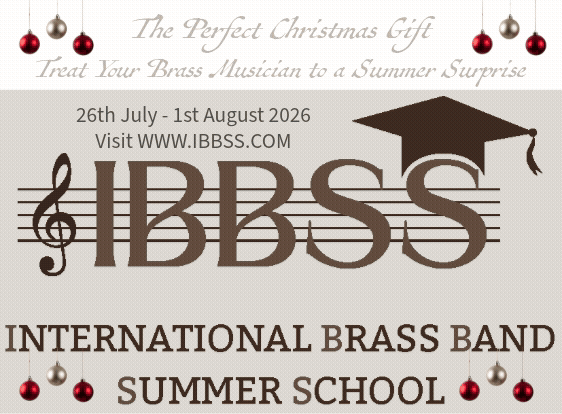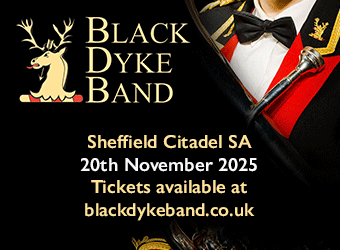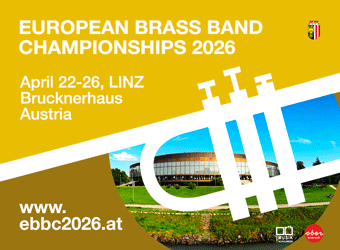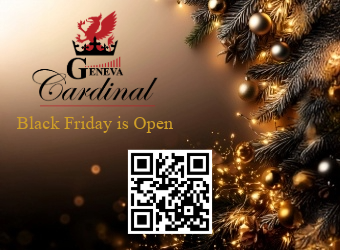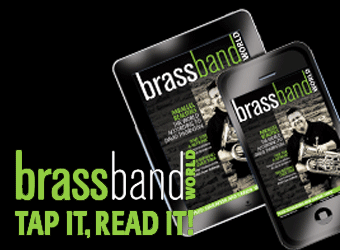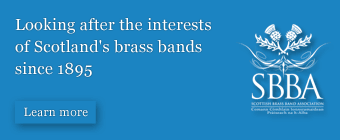Actaeon (Gareth Wood)
The mythological Greek tale of the demise of Actaeon is one that luridly describes the consequences of unrestrained hubris - written in gloriously cinematic detail by Ovid in his celebrated ‘Metamorphoses’, and later painted with a little more restraint by Titian.
The brazen young son of Aristaeus taunts his hunting hounds with their blood lust as he himself is overcome by the sight and ravishing beauty of the goddess Artemis (Diana to the Romans) who he finds bathing naked in a woodland spring.
Her nymphs try to conceal her modesty, but to no avail, and in her desperation to escape she vengefully splashes water over Actaeon, turning him into a stag.
Now the hunter becomes the hunted, as he cries out for help only to find his voice and non-human form to be unrecognisable to his hounds, which mercilessly pursue him to his death - tearing him limb from limb.
The work follows the narrative line - first with Actaeon’s acidic taunting, followed by a scherzo ride through the forest in search of prey.
What is found is something beyond description - a gentle section of lyricism portraying the bathing Artemis, before the fateful encounter leads to transformation and terror.
Defiance (Andy Scott)
Andy Scott’s deeply personal work is inspired by, and dedicated to, the people of Manchester.
Over the course of its long history, pride and passion has played hand in hand with loss – although the heartbeat of the city has remained resolute and unequivocal.
Scott’s family lived and worked in its centre – one that has witnessed great periods of cultural, industrial, sporting success and regeneration, as well as immense tragedy.
‘Defiance’ echoes that sense of possessive belonging; both physical as well as metaphorical following the IRA bombing of 1996 and the Manchester Arena attack of 2017. Scott was inspired by the sense of collective solidarity; the undeniable spirit of the people of the city and beyond.
The work, like the history of Manchester, develops through change. Colours, textures, moods and styles emerge, dominate and then coalesce, bridging musical eras from 1930s swing to 1980s ‘Madchester’ as it flows, embracing as well as overcoming challenges, expected and unexpected.
That central core of positivity remains however, highlighted by a clear section of ‘remembrance’; its message of hope carried by its tonality, emotion and power.
Destination Moon (Paul Raphael)
Philip Harper’s 'Destination Moon' (written under the pseudonym Paul Raphael) is inspired by one of Belgium’s most famous literary characters; the intrepid young reporter turned detective, Tintin, created in 1929 by writer Georges Remi under his own pseudonym, Hergé.
‘Destination Moon’ was Tintin’s 16th adventure; first serialised in 1950 and predating the escalating space race between the USA and the USSR which culminated in the moon landings of 1969.
The music broadly follows the story’s narrative line through three main sections: The first describes the technical explorations of formulae and equations in the secret scientific laboratory of Professor Calculus, whilst the second explores the very human reaction of those taking part in terms of spiritual, philosophical and existential questioning to what may await them.
The finale builds in tension before the thunderous rocket launch into the void of space.
It is a musical tale of mystery, espionage and excitement, as well as communal technical achievement and personal, moral insight.
It also speaks of the triumph as well as the potential for disaster for the young hero and his crew, as in reflecting the end of the book as the rocket disappears into the heavens, Herge keeps the reader transfixed - the ground crew attempting to contact those aboard, repeating the phrase: “Earth calling Moon Rocket… Are you receiving me?”
Fraternity (Thierry Deleruyelle)*
Thierry Deleruyelle’s work was originally commissioned as the set-test for the 2016 European Championship in Lille, and was received with widespread acclaim.
It is inspired by the tragic circumstances of a 1906 mining disaster in Douai in France that claimed over 1,000 lives, and is written in an open, tonal fashion - eschewing high-energy injections of volume and speed for more considered pacing, texture, subtly scored balances and lengthened lyrical lines.
The musical narrative, with nods of Gallic appreciation to the likes of composer Paul Dukas, set the scene; telling the tale and recalling the aftermath in seven linked sections; from the ‘Black Land’ and ‘Towering Colliery’ above ground, to the journey to the face to extract the coal.
The catastrophe is ignited by a fractured, frenzied forcefulness, the prelude to which is the ghostly on-rush of air through instruments; life or death a matter of luck.
The solemn task of bringing out the dead leads to a bleak paean of reflection, before the piece ends in uplifting fashion in the form of a 'Fraternity Prayer' that pays tribute to those lost.
*To be played by two bands
Goldberg 2012 (Svein H. Giske)
Svein Henrik Giske's work, written for the Norwegian National Championships in 2012, was inspired by what he called ‘parallel musical lives’.
These are as diverse as the composer of the classic ‘Goldberg Variations’, J S Bach and the troubled genius of the pianist Glenn Gould, to the Nordic jazz funk pulses of the Brazz Brothers, his own new born son Olav, and his recently deceased father Svein J Giske.
It is a fusion of memory and miasmic impression; love, loss, reminiscence and dedication constructed of several layers of differing musical styles and genres - all starting from a personal recall of the music that accompanied part of the Oscar winning film, ‘The Silence of the Lambs’.
The composer forensically explores elemental fragments of the 30 variations of Bach's 1741 masterpiece by bringing them into the present age in series of contrasting musical landscapes; each individually defined but not in essence linked other than by an underlying basic pulse - ‘almost unaware of each other’, as he says.
It results in a free-flowing rhythmic whole that encompasses thumping pop/jazz, elegant baroque and even folk music – although at its core is an icy, melancholic paean of loss entitled, ‘From Long Ago’, dedicated to his late father.
Hypercube (Oliver Waespi)
Oliver Waespi has written a number of works that reflect the majesty of nature and its connection to man - both geographically as well as historically; from the narrow Alpine pathways in ‘Traversada’ to ‘As if a Voice were in them’, with its powerful interpretation through the poetry of William Wordsworth of the imposing Simplon Pass.
He has also explored the urban landscape - notably through his orchestral works such as ‘Viaduct’ and ‘Pulse’ - and with this 2015 composition, ‘Hypercube’.
It is inspired by the iconic modern architecture of Paris- and in particular, of the La Grande Arche de la Defense, completed in 1989, and which features a hypercube construction - a cube of space found within a cube of concrete and glass surround.
It is this, and the interpretation of the architect’s vision of a monument to humanity and humanitarian ideals that inspires the bold opening statements and pulsating symphonic sweep of its contemporary language.
At its musical core lies a chorale inspired by the hanging ‘cloud’ or ‘nuages’ that can been seen at the centre of the structure itself – interpreted as a beautiful, peaceful dialogue for trombone, cornet, euphonium and baritone.
The calm serenity does not last however, and the work closes in imposing fashion and a return to the urban constructs of architectural complexity which builds to a triumphant close.
Jazz: Symphonic Dances for Brass Band (Philip Wilby)
‘Jazz’ was commissioned by Philip Biggs and Richard Franklin for the 1997 All England Masters Championship.
It is inspired be the composer’s impressions of his first visit to New York, and in particular a concert he heard at Carnegie Hall in the Lincoln Centre - a venue that stood on what were the original apartment blocks that inspired Leonard Bernstein’s ‘West Side Story’ - and its famous ‘Symphonic Dances’ score.
Wilby’s four dance sequences are separated by solo links – (the introduction an affectionate nod to Gershwin’s ‘Rhapsody in Blue’) much like a 1930’s dance band medley, but also echo his love of the classical symphonic form; the first a mini Sonata movement of changing rhythmic pulse and meter.
It is followed by the artifice of ballroom glamour and suave sophistication – of black tie ‘events’ headed by an ‘orchestra’ led by a charismatic leader (who may or may not take a solo lead according to Wilby’s mischievous footnote).
The final two movements are linked by simple acceleration – mimicking the ever quickening pace of a city that never sleeps; frenetic and feverish, classic elements of scherzo and trio writing intertwined to a concluding, ‘breathless’ fugue amid laughter, gunfire and police whistles - all swinging wildly in ecstasy.
As Wilby himself wryly notes; “The composition may be thought to end more with sardonic ruin than with finely crafted peroration”.
Metropolis 1927 (Peter Graham)
Fritz Lang's 1927 science fiction film epic 'Metropolis' is considered to be a masterpiece of cinematic vision.
Set in a future dystopian world, it highlights the lives of two contrasting communities living in the vast city landscapes: Those above ground with a life of privilege and pleasure are maintained by the subterranean-dwelling drone workers whose role is to operate the banks of machines which provide the city's power.
Although Lang's film can be considered a type of 20th century morality play with its famous female 'Maschinenmensch' robot, it has also been interpreted as a Marxist/Leninist critique of the corrosive underbelly of the inter-war German Weimer Republic.
Although the work does not attempt to précis the plot, such as it is, nor promotes the message of the original, it does reflect the composer’s appreciation of Lang's noirish visual style and set designs - from the brooding machine rooms, decadent nightclubs and gothic cathedral to the paradoxically beautiful creations such as the surprisingly erotic robot.
‘Metropolis 1927’ is a theatrical take on that inspiration; with its slightly acidic, dark tonality and clever snapshot imagery - from air-raid sirens to Dixie jazz combo leading the listener through the urban landscape to what is hoped is a triumphant conclusion of lasting happiness.
Partita for Band (Wilfred Heaton)
In 1947 and 1948 Wilfred Heaton composed his first original work for brass band, a suite written under the pseudonym Paul Krask and dedicated to Eric Ball.
Ball later told Heaton that the work was ‘too difficult’ to perform and in 1950 he re-worked the ‘Suite Op.1 for Symphony Orchestra’, adding a new and vibrant scherzo, whilst some time later a new second movement and finale were incorporated into an extended piano sonata.
However, a brass band version remained undiscovered until 1984, when Howard Snell asked Heaton for a new work.
What turned up shortly afterwards was the original brass ‘Suite’, amended later by Snell’s request with an extended Scherzo.
This ‘new version’ was entitled ‘Partita’ and features a short, arresting 'Prelude', a fleet-footed 'Scherzo', lyrical 'Canzona' and a brilliant 'Rondo' to complete a forgotten masterpiece of original compositional craft.
Perihelion - Closer to the Sun (Philip Sparke)
'Perihelion' was commissioned by the Cory Band as their own-choice work for the 2013 European Championships.
It is in essence a concerto for brass band (although played in one continuous movement). It is abstract in inspiration and entitled as such due to the date on which the composer begun writing it on January 2nd 2013. This was the day of Earth’s perihelion - the point in its orbit when it is closest to the sun.
Sparke describes the work as weaving between ‘moments of brilliant optimism and dark shadow, both of which can be the result of bright sunshine’.
It opens nervously before developing with the trademark hallmarks of Sparke’s craftsmanship – florid lines of pulsating energy with echoes of Wagner, Dukas and Ravel as the music either dips into darkness or emerges into sparkling light.
Passion and drama, robust positivity and subdued introspection play off each other as the work moves towards its finale – a bustling, bristling virtuosic fugue (with a neat nod of appreciation to Holst) that gathers unstoppable momentum to a shattering close.
The Turing Test (Simon Dobson)
Alan Turing is considered the father of modern computational science; mankind owing an immeasurable debt of gratitude to a truly great, but deeply troubled soul.
His pioneering work on mathematical theories ultimately led to the cracking of the Nazi Enigma Machine code, yet his life ended in lonely tragedy with his apparent suicide - a victim of intolerance and ignorance towards his homosexuality.
Simon Dobson’s work, although non-programmatic, seeks to detail something of the emotion and colour of Turing’s life – from his imagined beginnings into bio-digital life-forms (AI) and his entry into the scientific community, to his ever more complex solutions to ever more deadly war time problems.
His 1952 arrest for ‘indecency’ leading to the choice between imprisonment or the unbearable punishment of chemical castration (which he chose) so that could continue his work, is explored in sombre reflection.
The last section tells of his eventual posthumous pardon and the sense of chaotic sadness rather than triumph, that one of the greatest minds had been treated with such abject cruelty at a time when his own work was on the verge of reaching a remarkable resolution.



